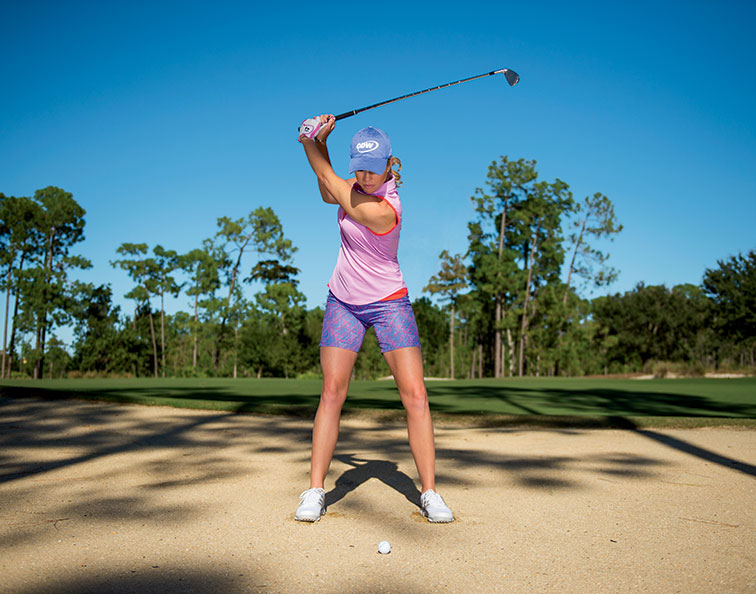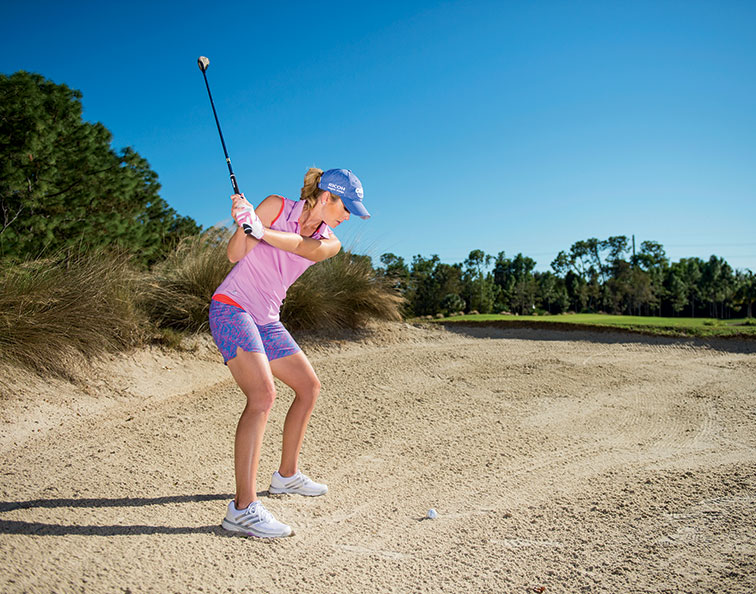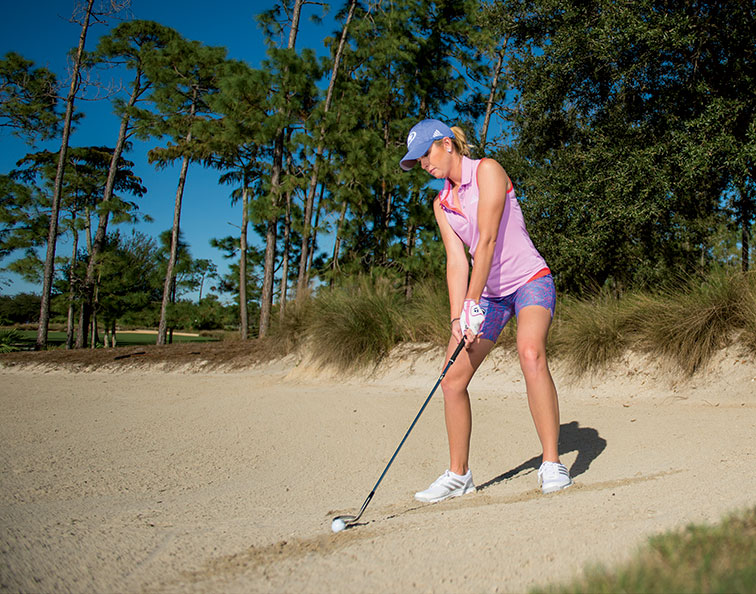I’ve always loved playing from bunkers, and bunkers have usually loved me back. Sometimes I get frustrated by the shots that put me in the sand, but once I’m there, I embrace the opportunity. Your goal on any bunker shot should be to have a comfortable blend of technique and attitude. If your technique is sound, you’ll get good results, which in turn will lift your confidence. I’m going to show you how I play three common shots: the greenside splash shot, the iron from a fairway bunker and the toughest shot of all – the 50-metre blast from the sand. How will you know when they’re working? When, like me, you find yourself smiling when you walk into the bunker. – with Guy Yocom
Fairway Bunkers: Head High, Full Arc

Good fairway-bunker players stand tall at address and make a relaxed swing. Poor bunker players do just the opposite: They have a crouched, cramped setup, and they get even more tense during the swing.
As you set up to the ball, hold your chin high and add just a bit of bend to your knees. Then make as full a turn as you can without losing your footing. For stability, you can even dig your feet in slightly before you swing. At impact, try to make a level strike, keeping in mind that it’s better to hit it a little thin than fat.
The 50-Metre Shot: Lock In Your Legs

Why is 50 metres from the sand the hardest shot in golf? Because if you hit behind the ball even a tiny bit, you’ll probably only get it halfway there. You need to pick the ball clean.
Set up slightly open, play the ball in the centre, and make sure your stance is solid. You need about half your normal backswing. As you go back, keep your head still and your lower body quiet. Then swing briskly down and through the shot, and don’t freeze any part of your body. If you quit on it, you’ll chunk it.
Greenside Bunkers: Keep The Face Up

On short shots, a couple of simple cues can really help. After setting my body and the clubface open [right], my thought is: Thumbs to the sky. Halfway back, you want your thumbs to point straight up. That keeps the club along the target line and the face open.
Through impact and beyond, I’m thinking, Face to the sky. If the clubface keeps looking skyward, you’ve maintained the loft and brought the club’s bounce into play. That’s how you splash it out.
Paula Creamer has won 10 times on the LPGA Tour, including the 2010 US Women’s Open.



